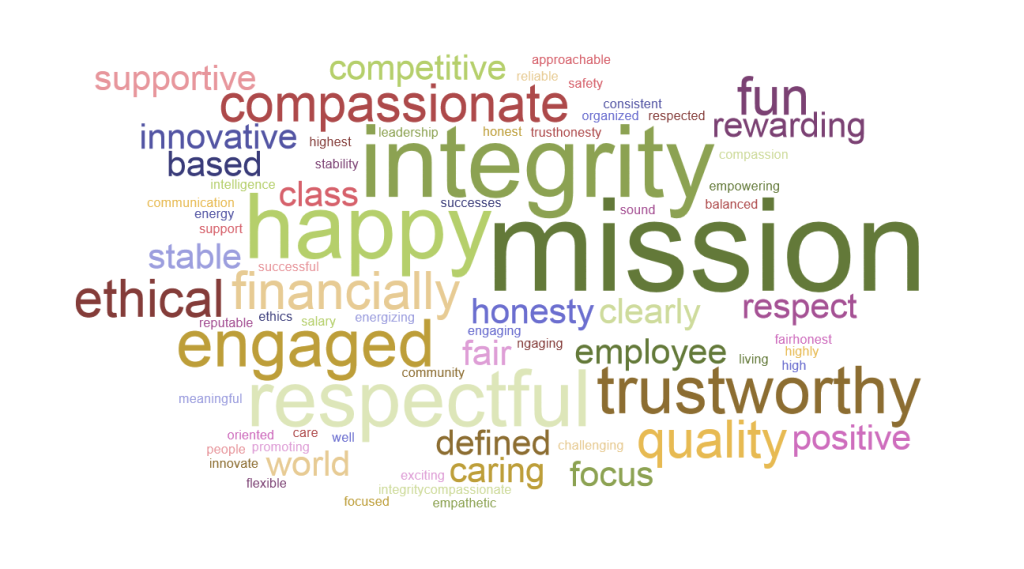It has been well established that individual health and well-being can be improved via nutrition, exercise, and stress management. Many also now embrace a broader approach, where systems thinking and human-centered design methods foster greater organizational health with their potential for positively impacting the health of individuals, families, and communities.
This HERO webinar featured Drs. Dee Edington and Jennifer Pitts of Edington Associates, LLC, who joined HERO’s president and CEO, Paul Terry, to discuss their new book, Shared Values-Shared Results, a reference to creating positive organizational health.
Dr. Dee Edington has contributed to over 1000 papers and presentations related to health management and worksite wellness and has collaborated with industry experts to provide an all-encompassing approach to addressing health needs and controlling costs. Dr. Jennifer Pitts is an expert on the relationship between our social connections, attitudes, and overall health. Dr. Edington holds the view that current approaches to improving health within organizations will be more effective when we add components to create a thriving, sustainable workplace and workforce. In his previous book, Zero Trends, Dee asked employers and employees to describe the ideal type of workplace. Very few mentioned reducing healthcare costs. Shared Values-Shared Results builds on these learnings and seeks to take the complexities of our field into account while building a model grounded in simplicity.

Many employees strive to work for places with characteristics such as those illustrated in the word cloud above. Unfortunately, few report that they do. Instead of striving for the attributes shown in the word cloud, Edington and Pitts note that many organizations have focused much of their attention on individual employee health and how to reduce risk factors. This is more of a cost avoidance approach where improved behaviors equals dollars saved.
In order for organizations to move toward a place of shared values, Edington and Pitts suggest they need to redefine health. This involves a focus on individuals feeling refreshed with a positive attitude and ready to engage with work in a meaningful way. Thriving employees demonstrate high enthusiasm, energy, and respect, which have lasting effects both within the workplace as well as with families and the community. The model below demonstrates the essential elements needed to achieve positive employee and organizational health.

The model expands upon the five pillars that Edington describes in his book, Zero Trends, and has evolved to become an engaging, shared process: developing shared values, a shared vision, and a shared purpose. This approach builds on the belief that employees are valuable resources, which is a win-win philosophy.
We polled our webinar participants to assess their organization’s wellness focus and where they fit in Edington and Pitts Expanded Care Continuum. A majority (78%) of respondents indicated that their wellness focus is moving more towards helping employees thrive. Our webinar panel agreed organization’s wellness programs should evolve to help employees thrive while still being mindful of overall employee health.
Because an organization’s wellness and well-being program can be multimodal, we asked the audience to identify components they currently offer. Most respondents offered not only traditional on-site screenings (80%) and risk reduction programs including EAP (100%), but more than 90% provided development opportunities to help employees thrive and grow within the organization. Effective programs need to be multifaceted to drive greater employee engagement in the organization’s wellness program.
To determine effectiveness, organizations need to measure program components and communicate what matters. The final poll question asked the audience what element within the program they could improve upon. Nearly one-third (31%) of respondents reported their organizations could improve on tracking health outcomes or establish a guiding framework for evaluation, 19% felt they could improve on how they evaluate the culture, 13% believed they should improve how they evaluate the value on their wellness investment (VOI), and 6% thought they should improve on how they report to their leaders on the progress they are making toward the organization’s vision.
HERO members can view the recording of this webinar in our Resource Center.
